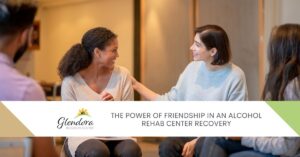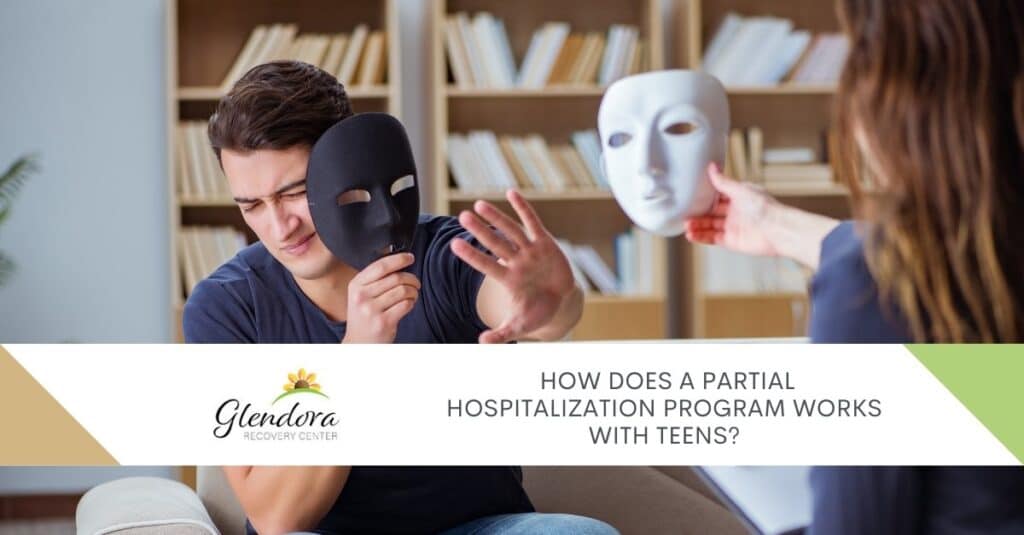It is critical that teenagers look after their mental health. It is not uncommon for teenagers to experience behavioral issues. According to the Centers for Disease Control and Prevention (CDC), between 7% and 8% of teenagers have a behavioral health problem. Substance abuse disorders may also be included. Partial hospitalization programs for teenagers have multiple benefits and can help in this situation. Such programs can accommodate all of your recovery requirements. Do you desire a treatment that is more rigorous than an inpatient hospital stay but less all-encompassing? If so, Glendora Recovery Center’s partial hospitalization program (PHP) may be the best option for you or someone you care about. If you’d like to know more about how a Partial Hospitalization Program works with teens, this short article is just what you need.
What Can a Partial Hospitalization Program Offer Me?
Unfortunately, there are many reasons why teenagers often struggle with their mental health and sometimes need to be hospitalized to get treatment. A partial hospitalization program allows teens to get treatment while still living at home with their families. This program is a lower-level form of treatment than an inpatient stay, so teens can still spend time with their families and attend school. Teens usually spend six or more hours a day in treatment, every day or most days of the week, making this a rigorous and complete program. Then, in the evenings, they return home. As a result, PHP programs are also known as Day Programs, day treatment programs, and Partial Inpatient Treatment.
At Glendora Recovery Center, each person’s PHP experience is tailored to their particular needs. Classically, almost everyone’s treatment will include both one-on-one and group therapy sessions, all of which will be led by a skilled, experienced therapist. You’ll learn various techniques that will enable you to not only stay sober but also live a happy and healthy life.

How Does It Work?
A partial hospitalization program works much like traditional in-patient therapy. The main difference is that instead of being admitted to the hospital, teens are placed in a facility closer to home so they can continue with the program and their regular routines. This allows teens to receive the treatment they need without sacrificing their other commitments and responsibilities, such as school, work, or any other type of extra-curricular activity.
Intensive Outpatient and Partial Hospitalization Programs: What’s the Difference?
As we mentioned before, partial hospitalization is a step down from inpatient hospitalization in terms of therapy. However, it is more intensive than traditional outpatient treatment.
When teenagers are experiencing acute psychiatric symptoms, they are referred to partial hospitalization programs. While such symptoms can be difficult to treat and certainly require a professional to treat, they do not necessarily require round-the-clock attention. Teenagers in adolescent partial hospitalization programs participate in structured programming throughout the day. Furthermore, with PHP treatment, many inpatient hospitalization regulations apply. Teens may be required, for example, to leave their phones at home or to wear shoes without laces.
Intensive Outpatient Treatment (IOP) is meant to help teens who have completed residential treatment continue their rehabilitation in an organized and secure setting. As a result, teen Intensive Outpatient Programs (IOPs) and PHPs are comparable. Clients, on the other hand, come for fewer hours—three to four hours per day, several times per week, but they follow a strict at-home program.
The Benefits of a Partial Hospitalization Program
Teenagers are prone to using drugs and alcohol because they are impressionable and young. It’s critical to address these difficulties as soon as possible before they have a lasting impact on their adult lives.
One of the most important benefits of a Partial Hospitalization Program (PHP) is the support it provides for teens in rehab. Teens in PHP programs have the opportunity to have the structure, routine, and support they need to successfully complete their treatment. This provides a sense of security and safety for teens, who can focus on getting better. At the same time, this also allows them to maintain their other responsibilities and commitments, such as school and work, thus allowing them to keep building strong connections with friends and groups, such as a sports team.
If You’d Like To Know More Contact Glendora Recovery Center.
PHP can be intimidating at first due to its time commitment. However, it may be the most effective method to live the life you desire. Glendora Recovery Center has a program where you or someone you care about will be able to get care for several hours per day, several days per week. You’ll return home at night. We understand how difficult it is to take the initial step and contact a facility like ours. It is, nonetheless, worthwhile. You can change, even if it seems unlikely right now. Our PHP could very well be the solution. Call us at (626) 240-5056 to learn more or to begin the intake process.






